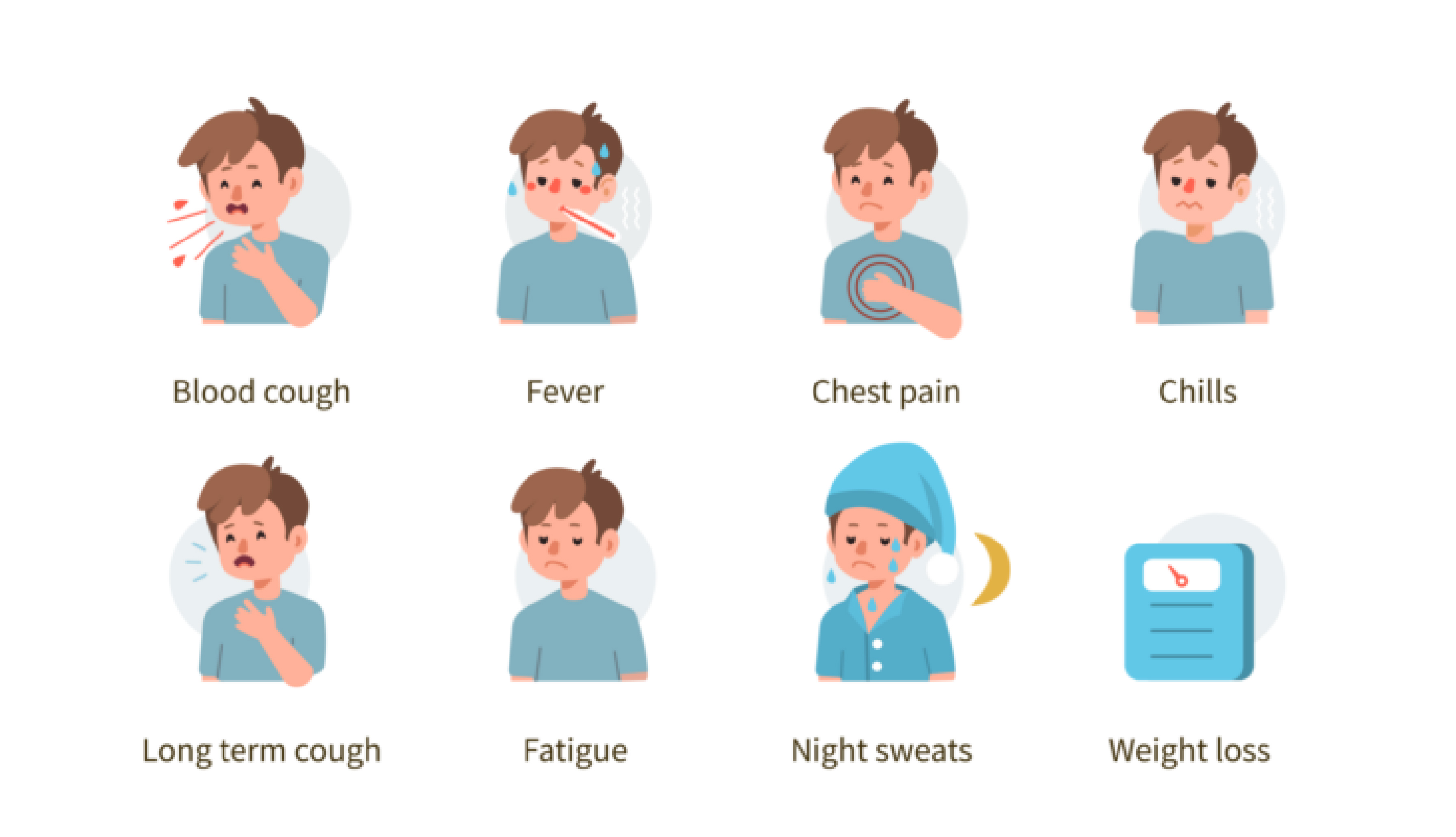China is one of the 30 countries with a high burden of tuberculosis in the world, and the domestic tuberculosis epidemic situation is serious. The epidemic is still severe in some areas, and school clusters occur from time to time. Therefore, the task of tuberculosis prevention and control is very arduous.
01 Overview of Tuberculosis
In 2014, WHO proposed a "termination of tuberculosis strategy". However, in recent years, the global incidence of tuberculosis has declined by only about 2% per year. Compared with 2015, the incidence of tuberculosis in 2020 decreased by only 11%. WHO estimates that more than 40%of patients with tuberculosis were not found or reported in 2020. In addition, the delay in the diagnosis of tuberculosis are widespread worldwide. It is particularly common in high-burden areas and in patients with HIV infection and drug resistance.
The number of patients estimated in China in 2021 was 780,000 (842,000 in 2020), and the estimated incidence of tuberculosis was 55 per 100,000 (59/100,000 in 2020). The number of HIV-negative tuberculosis deaths in China is estimated to be 30,000, and the tuberculosis mortality rate is 2.1 per 100,000.
02 What is TB?
Tuberculosis, commonly known as "tuberculosis", is a chronic respiratory infection caused by Mycobacterium tuberculosis. Mycobacterium tuberculosis can invade anywhere in the body (except hair and teeth) and most commonly occurs in the lungs. Tuberculosis in lungs accounts for about 95% of the total number of tuberculosis, and other tuberculosiss include tuberculous meningitis, tuberculous pleurisy, bone tuberculosis, etc.
03 How is tuberculosis transmitted?
The source of tuberculosis infection is mainly sputum smear-positive tuberculosis patients, and tuberculosis bacteria are mainly transmitted by droplets. Healthy people who are infected with tuberculosis do not necessarily develop the disease. Whether people develop the disease depends on the virulence of the tuberculosis bacteria and the strength of the body's resistance.
04 What are the symptoms of tuberculosis?
Systemic symptom: fever, fatigue, weight loss.
Respiratory symptoms: Cough, blood sputum, chest pain.
05 Solution
Macro & Micro-Test has developed a series of test kits for Mycobacterium tuberculosis to provide systematic solutions for tuberculosis diagnosis, treatment monitoring and drug resistance.
Advantages
Mycobacterium Tuberculosis DNA Detection Kit (Fluorescence PCR)
1. The system introduces internal reference quality control, which can comprehensively monitor the experimental process and ensure the quality of the experiment.
2. This kit use a combination of PCR amplification and fluorescent probes.
3. High sensitivity: the LoD is 100 bacteria/mL.
 |
 |
Mycobacterium Tuberculosis Isoniazid Resistance Detection Kit (Fluorescence PCR)
1. The system introduces internal reference quality control, which can comprehensively monitor the experimental process and ensure the quality of the experiment.
2. This kit uses an in-house improved amplification barrier mutation system that combines ARMS technology with fluorescent probes.
3. High sensitivity: the LoD is 1×103 bacteria/mL.
4. High specificity: there is no cross-reactivity with the mutations of the four drug resistance sites of the rpoB gene (511, 516, 526 and 531).
 |
 |
Mycobacterium Tuberculosis Nucleic Acid and Rifampicin Resistance Detection Kit (Melting Curve)
1. The system introduces internal reference quality control, which can comprehensively monitor the experimental process and ensure the quality of the experiment.
2. The kit uses the in vitro amplification detection technology of the melting curve method combined with the closed fluorescent probe containing RNA bases.
3. High sensitivity: the LoD is 50 bacteria/mL.
4. High specificity: no cross-reactivity with the human genome, other non-tuberculous mycobacteria, and pneumonia pathogens; The detection of mutation sites of other drug-resistant genes of Mycobacterium tuberculosis such as katG 315G>C\A, InhA-15 C>T.
 |
 |
Nucleic Acid Detection Kit based on Enzymatic Probe Isothermal Amplification (EPIA) for Mycobacterium tuberculosis
1. The system introduces internal reference quality control, which can comprehensively monitor the experimental process and ensure the quality of the experiment.
2. The kit uses the enzyme digestion probe constant temperature amplification method. The detection results can be obtained in 30 minutes.
3. High sensitivity: the LoD is 1000Copies/mL.
5. High specificity: no cross-reaction with other mycobacteria of the nontuberculous mycobacteria complex (such as Mycobacterium Kansas, Mycobacterium Suga, Mycobacterium nei, etc.) and other pathogens (such as Streptococcus pneumoniae, Haemophilus influenzae, Escherichia coli, etc.).
 |
 |
|
HWTS-RT001A/B |
Mycobacterium Tuberculosis DNA Detection Kit(Fluorescence PCR) |
50 tests/kit 20 tests/kit |
|
HWTS-RT105A/B/C |
Freeze-dried Mycobacterium Tuberculosis DNA Detection Kit(Fluorescence PCR) |
50 tests/kit 20 tests/kit 48 tests/kit |
|
HWTS-RT002A |
Mycobacterium Tuberculosis Isoniazid Resistance Detection Kit(Fluorescence PCR) |
50 tests/kit |
|
HWTS-RT074A |
Mycobacterium Tuberculosis Rifampicin Resistance Detection Kit (Fluorescence PCR) |
50 tests/kit |
|
HWTS-RT074B |
Mycobacterium Tuberculosis Nucleic Acid and Rifampicin Resistance Detection Kit (Melting Curve) |
50 tests/kit |
|
HWTS-RT102A |
Nucleic Acid Detection Kit based on Enzymatic Probe Isothermal Amplification (EPIA) for Mycobacterium tuberculosis |
50 tests/kit |
|
HWTS-RT123A |
Freeze-dried Mycobacterium Tuberculosis Nucleic Acid Detection Kit(Enzymatic Probe Isothermal Amplification) |
48 tests/kit |
Post time: Mar-24-2023

